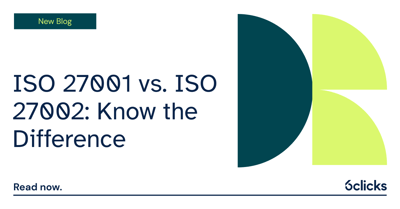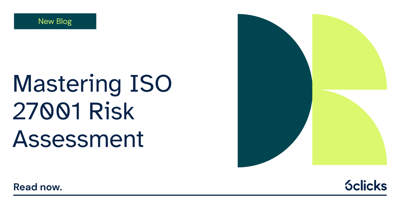ISO 27001 vs NIST CSF (Cybersecurity Framework)
ISO 27001 and NIST Cybersecurity Framework (CSF) both involve establishing information security controls to protect information assets, but the scope and approach for each vary.
ISO 27001 is a standard that focuses on keeping customer and stakeholder information confidential, maintaining integrity by preventing unauthorized modification, and ensuring information is available to authorized people and systems.
This standard outlines the requirements for Information Security Management Systems (ISMS) and gives organizations guidance on establishing, implementing, maintaining, and continually improving an ISMS.
On the other hand, the National Institute of Standards and Technology (NIST) has a voluntary cybersecurity framework for organizations overseeing critical infrastructure. Its goals are the same as ISO 27001, with an emphasis on identifying, evaluating, and managing acceptable risks to information systems.
ISO 27001 Overview and Structure
The ISO 27001 standard has ten clauses; the first three go over the references, terms, and other essential information covered in the regulation.
The other seven clauses guide companies in establishing and maintaining their Information Security Management System (ISMS). These are:
Clause 4: Organization's Context
This section focuses on the environment that it's working in, the systems involved, and its goals. The areas covered include the overall scope covered under the ISMS, the relevant stakeholders, and the assets that should fall under the information security management system.
Clause 5: Leadership and Commitment
An effective information security management system requires support from the top down. When upper management is actively involved throughout the process, it's more likely that the project will succeed. The business strategy should inform the information security measures that are part of the ISMS and provide the resources needed to support these initiatives.
Clause 6: Planning
Businesses should have a way to identify cybersecurity risks, treat the most concerning threats and discover opportunities for improvement. Ensuring you have a risk management process is the most essential part of this section. Furthermore, there is a requirement for organizations to prepare for ongoing cybersecurity assessments as new threats arise.
Clause 7: Support
Implementing a successful cybersecurity program requires enough resources to get up and running and ensure support ongoing. Organizations need the right combination of infrastructure, budget, people, and communications to achieve success in this area.
Clause 8: Operation
This clause covers what organizations need to do to act on the plans they have in place to protect and secure data.
Clause 9: Performance Evaluation
After a plan is established, companies should track whether the plan is effective and make changes where necessary, depending on current or emerging risks.
Clause 10: Improvement
Like all quality standards, effective information security management is an ongoing process. Organizations should plan to re-evaluate their ISMS regularly, to refine their plans in line with the latest risks.
NIST Cybersecurity Framework (CSF) Overview and Structure
Any company that has a heavy reliance on technology can benefit from implementing the NIST Cybersecurity Framework (CSF) guidelines. The NIST CSF uses five overarching functions to allow companies to customize their cybersecurity measures to best meet their goals and the unique challenges that they face.
-
Protect: A company needs to design the safeguards that protect against the most concerning risks and minimize the consequences that could happen if a threat becomes a reality. The protective measures that organizations put in place can include data security systems, cybersecurity training among all employees, routine maintenance procedures, access control, and user account control.
-
Identify: The key question here is what cybersecurity risks exist in the organization. The context of the company is important, similar to clause 4 in ISO 27001, as well as the present infrastructure and capabilities. Assessments of existing cybersecurity measures and risks fall under this section.
-
Detect: Early threat detection can significantly differ in the amount of damage that threats may cause. This section is focused on ensuring companies discover incidents earlier, determine whether the system has been breached, and proactively monitor all of the infrastructure and surface anomalies that could be the result of a cybersecurity problem.
-
Respond: How does the company respond to a cybersecurity attack after it happens, and do they have procedures in place that cover these eventualities? Everything should be planned out ahead of time so there's no question about who needs to be contacted during an emergency or an incident. The chain of command and lines of communication also get established under this function. Post-incident analysis can provide excellent information on what happened and how to prevent it from reoccurring.
-
Recover: This section focuses on what needs to happen to get the organization back to normal following a cybersecurity incident. Business continuity planning should cover how to restore the systems and data impacted by an attack. It also dictates how long it takes to recover and what needs to happen moving forward.
ISO 27001 vs NIST CSF: which one to choose?
Companies may see a lot of NIST CSF and ISO 27001 overlap. The right choice for an organization depends on the level of risk inherent in its information systems, the resources they have available, and whether they have an existing cybersecurity plan in place.
Significant overlap between the two standards provides companies with extensive guidance and similar protections, no matter which they choose. As such, in many cases, organizations choose to adopt both NIST CSF and ISO 27001. Also, read - ISO 27001 vs NIST CSF: Different yet complement each other?
Ready to start building your top-down approach to GRC? How about a whistle-stop tour with one of our 6clicks maestros?
Easy - just click the button below and let the good times roll.
All we want to do, every day, is make the world of GRC easier to manage. We can't do that without you, so we hope to hear from you real soon!
Related useful resources
Written by Dr. Heather Buker
Heather has been a technical SME in the cybersecurity field her entire career from developing cybersecurity software to consulting, service delivery, architecting, and product management across most industry verticals. An engineer by trade, Heather specializes in translating business needs and facilitating solutions to complex cyber and GRC use cases with technology. Heather has a Bachelors in Computer Engineering, Masters in Engineering Management, and a Doctorate in Information Technology with a specialization in information assurance and cybersecurity.












